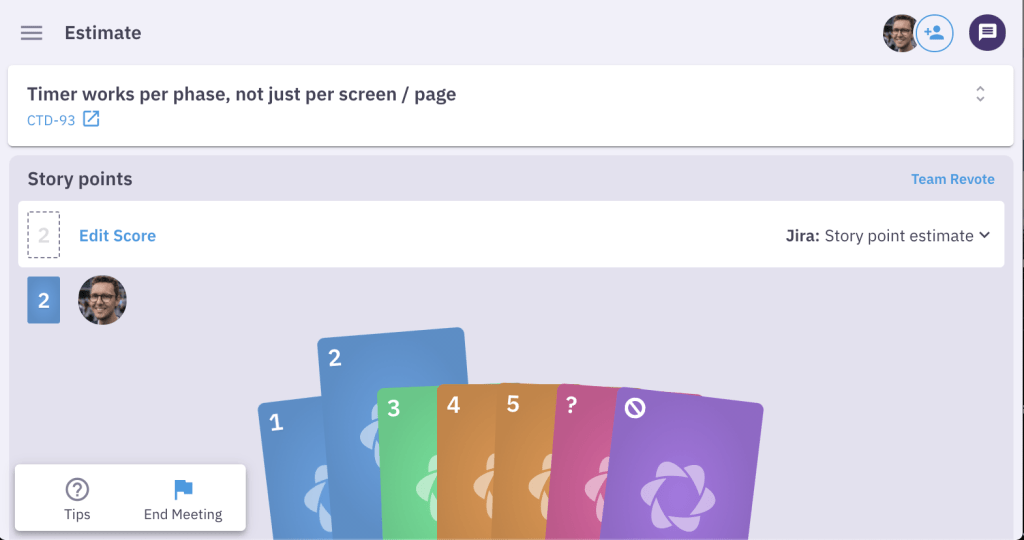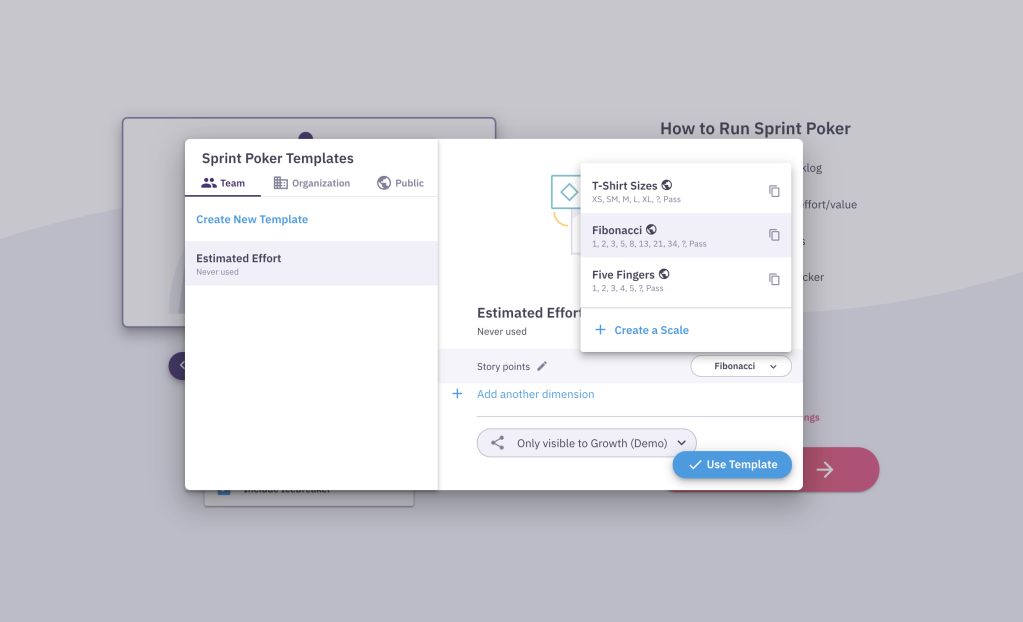Five Fingers
An Estimation Scale That’s Always On Hand

Take a hands-on approach to estimation
The Five Fingers sizing scale really shines through when you need to make simple estimates and find consensus.
It’s an adaptable scale that helps you estimate and then focus on prioritization, organization, or feedback afterwards.
In Five Fingers, you raise however many fingers reflect your estimate – or in an online tool like Sprint Poker, you play the corresponding card from 1-5.
1 finger: This story is small or simple. It’s piece of cake to complete.
2 fingers: This story looks straight-forward enough but it will require a bit more effort.
3 fingers: This story isn’t big or small – it’s in the middle. Par for the course, you might say.
4 fingers: This is a big task that requires significant effort to complete.
5 fingers: This one is a real tough cookie. It’s going to take some serious effort to complete. It might need to be broken down further.
Five Fingers is a versatile agile estimation scale, because the numbers 1-5 can first be used by the team to indicate effort and then re-purposed as a method of forming an agreement on the path forward.
Let’s say you’ve estimated an effort of 5 for that real tough cookie of a task, but your team members have different estimates.
Once you’ve discussed and arrived at a new estimate, you can vote again to confirm the decision, using the five fingers differently:
1 finger: I strongly disagree
2 fingers: I disagree
3 fingers: I can see the pros and the cons, but I’ll accept the decision of the group
4 fingers: I agree
5 fingers: I strongly agree
Using the Five Fingers method in person or on a video call can cause some problems.
People are liable to be swayed by the bandwagon effect of seeing their peers voting in a particular way.
With Sprint Poker, Five Finger voting happens anonymously on cards, which means you can have a more open and honest conversation about effort.

Why use the Five Fingers scale?
Five Fingers sizing is a great option for planning the direction of a project, or running a post-mortem on a recently completed project. You can use it to make a decision on what your team works on next, or you can use it to see how the team feels about structural changes in their workflow, it’s up to you.
The strength of Five Fingers is in its simplicity and the discussion it can generate. If there’s an even mix of votes, you’ll need to talk it out to reach a consensus before moving on. And since it’s a numerical scale you can also average out the team’s estimates to create a composite score, if you want to.
Another strength of Five Fingers sizing is its flexibility. The suggested definitions for each finger above are just that, so play around by assigning different meanings to the five fingers for your own team. Just make sure to discuss them before you start estimating, to keep everyone on the same page.
Five Fingers in Parabol
Start using the Five Fingers scale in Parabol by selecting it from the menu when you start a Sprint Poker meeting.
Every participant will get seven cards. Five of those cards will fill in for each finger, while the other two – the question mark and pass cards – come with every deck, regardless of scale.

You might play the question mark card when there’s not enough information to cast an accurate vote.
It could be that the stakeholder hasn’t filled out a ticket properly, or it could just be confusing wording. For example, if you were running a Five Fingers meeting and the story was “Re-configuring the online checkout design” someone could play the question mark card if they’re unsure about whether the updates would be to the online site or also the app? Because if it’s just one or the other, that’s going to be a much lower estimate than if it’s both.
The question mark card can help you gain clarity on what you’re estimating and act as quality control on the clarity of your user stories at the same time.
You might use the pass card if you want to sit out for a round. For Five Fingers sizing, this might be used on multi-disciplinary teams when a member of the team has no relevant experience with the prompt or task. If the question is about the check-out reconfiguration but the team member works in marketing, they can play the pass card so they won’t unnecessarily skew the data by voting on something that they won’t be working on.
As versatile as it is, the Five Fingers scale is just one of the sizing options you can use with Parabol’s Sprint Poker tool. There’s also the Fibonacci scale and the T-Shirt Sizes scale.
Or you can bring your own scale to the poker table, maybe try something like, “Chihuahua, Corgi, Beagle, Bulldog, Great Dane,” it’s up to you!